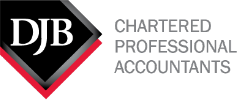The tax-free FHSA was introduced in 2023 to help first-time home buyers save up to $40,000 for a home purchase.
Individuals eligible to open an FHSA must be at least 18 years of age and resident in Canada. The individual must also have not lived in a home that they or their spouse owned jointly or otherwise at any time in the year or the preceding four calendar years.
Contributions to an FHSA are deductible (like an RRSP). Income earned in an FHSA and qualifying withdrawals from an FHSA made to purchase a first home are non-taxable (like a TFSA).
The lifetime limit on contributions is $40,000, subject to an annual contribution limit of $8,000, both of which apply at the individual level. Each spouse (or commonlaw partner) could invest $40,000 and withdraw the full value (including investment income and growth) tax-free to acquire their first home. Individuals can carry forward unused portions of their annual contribution limit up to a maximum of $8,000.
Individuals can also transfer funds from their RRSP to an FHSA tax-free, subject to the $40,000 lifetime and $8,000 annual contribution limits. The maximum participation period for an FHSA ends at the earliest of:
- 15 years after opening an FHSA;
- the end of the year following the year of the individual’s 70th birthday; and
- the end of the year following the year when the individual first makes a qualifying withdrawal from an FHSA.
Any funds remaining in the plan after the maximum participation period could be transferred tax-free into a RRIF or an RRSP without eroding contribution room. Otherwise, the funds will have to be withdrawn on a taxable basis.
Timing of opening an FHSA
A June 28, 2023, Advisor’s Edge article (How to properly plan the opening of an FHSA, Charles-Antoine Gohier) discussed the impact of individuals purchasing homes later in life on FHSA planning.
The article quoted a study from 2020 that estimated that the average age to buy a home in Canada is 36. If an individual opens an account at age 18, the plan must be closed no later than 15 years later, that is, when the individual is 33. If the individual contributes the annual maximum of $8,000 for the first five years to reach the maximum contribution of $40,000, assuming a 4.5% return, the balance of the FHSA would be $74,221 at the end of 15 years. If not used for a home, the individual must either withdraw the balance on a taxable basis or roll the balance into their RRSP on a tax-free basis. While rolling the FHSA into the individual’s RRSP does not erode their RRSP contribution room, no tax-free withdrawal would be possible for subsequent use of the funds to purchase a first home. Up to $35,000 could be withdrawn from the RRSP under the home buyers’ plan, but this would be subject to repayment conditions. Where sufficient funds are available in the RRSP, the home buyers’ plan can be used in conjunction with a tax-free FHSA withdrawal.
Home buyers’ plan (HBP)
In a May 15, 2023, French Technical Interpretation, CRA was asked whether an individual could withdraw $8,000 under the HBP and contribute the funds to a tax-free FHSA, knowing they would purchase a qualifying home the following month.
CRA first noted that the HBP and FHSA can be used for the same home purchase. Provided that the relevant requirements of both plans were complied with, the taxpayer could contribute the HBP withdrawal as a deductible FHSA contribution, then take a qualifying withdrawal from the FHSA in respect of the same home purchase.
This would be an alternative to rolling funds from the RRSP to the FHSA. Using the HBP approach would provide an immediate deduction for the FHSA contribution (a rollover would generate no deduction) but would also require the HBP withdrawal to be repaid to the RRSP in future years to avoid tax. The legislation does not impose any minimum period that contributions must remain in an FHSA before being withdrawn to acquire a home.
Tax-free qualifying withdrawals
A May 23, 2023, Advisor’s Edge article (What are the FHSA qualifying withdrawal rules?, Rudy Mezzetta) discussed the conditions for a qualifying withdrawal.
The taxpayer holding the FHSA must be a resident of Canada at the time of withdrawal and remain so until the qualifying home is acquired.
The taxpayer must also have a written agreement to buy or build a qualifying home before October 1 of the year following the first qualifying withdrawal. Further, they must occupy or intend to occupy the qualifying home as a principal place of residence within one year after buying or building it. The article indicated that CRA had confirmed, in an email, that there is no minimum amount of time that the taxpayer must live in the qualifying home. The article also noted that if the acquisition of the home before October 1 of the following year was frustrated by unforeseen events, the taxpayer may have to provide evidence supporting their intent to occupy the property to avoid the withdrawal being subject to tax.
The individual must also be a first-time home buyer, defined as someone who has not owned or jointly owned their principal place of residence in the current year or any of the previous four years, to make a qualifying tax-free withdrawal. Unlike the requirements for opening an FHSA, home ownership by the individual’s spouse or common-law partner is not considered in the definition of a qualifying withdrawal. The individual may own the qualifying home for up to 30 days prior to the qualifying withdrawal and still be a first-time home buyer.
ACTION: Consider whether opening up and contributing to an FHSA is an option for you or a family member










